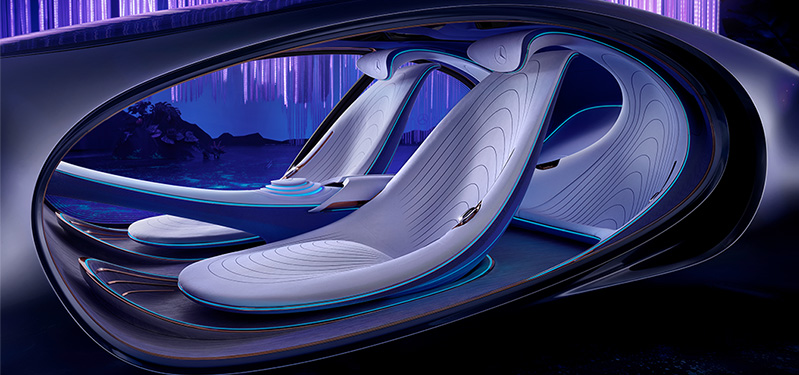From Animals to Sustainable Surfaces
Moving from fossil fuels to electric power is just one step towards more sustainable driving. Cars are such big, complex devices – full of components from all over the world created by suppliers who source their materials from even more places. As automakers look at ways to make their entire value chain more sustainable, they are looking far beyond just drivetrains to reduce their impact on the environment. And one area where there’s been a lot of progress has been interiors.
What constitutes a great automotive interior is changing fast. The markers of comfort and luxury – leather, wood, and plastic – used to be associated with dead cows, dead trees, and dead dinosaurs. But, as driving electric has become cool, it’s no surprise that these materials aren’t as attractive to buyers as they used to be, and car brands are adapting by introducing interior surfaces that more closely reflect the sustainability message of what’s powering the car itself.
Most of what you see inside a traditional car interior is some kind of plastic – and traditionally, plastic is created from “virgin” petroleum products. Auto manufacturers are quickly substituting these non-sustainable sources with creative mixes of plant-based materials and cleverly recycled plastics to reduce their environmental footprint.
For instance, Ford uses wheat straw, rice hulls, cellulose and coffee chaff in its material mix; it uses soy-based foam for seat cushions and plastics retrieved from discarded ocean fishing nets for carpet material. Mazda’s latest seat fabrics are actually manufactured from material from recycled PET bottles, and the company offers cork as an interior trim finish on the new MX-30 electric car. This recycled product looks great and is far more sustainable than wood veneers.

Recycled Bottles and Compressed Timber
Mercedes-Benz, for a long time one of the biggest purveyors of leather-and-wood interiors in its luxury cars, is now one of the most progressive in its use of sustainable interior finishes. Its Dinamica microfibre – a synthetic suede product that looks great and offers exceptional grip on steering wheels, seats, and other high-touch surfaces – is made from recycled bottles. Floor coverings contain Econyl, which includes recycled nylon waste from old fishing nets and carpet remnants. It also uses Karuun, an innovative compressed timber product that grows very fast and is harvested by hand in Indonesia.
Bentley is another luxury brand known for dead trees and dead cows. While its dashboards still feature large panels of symmetrically-matched wood, it’s made from 5,300-year-old lumber sourced from the bottom of swampy bogs, rather than from trees cut down specifically for the purpose. The brand now offers Vegea vegan leather that is actually made from grape skin, seeds, and stalks; look at it and touch it and you can’t tell the difference from “real” leather. More importantly, vegan leather can be wiped down with sanitizer – meaning seats, door panels, headliners, and other surfaces can be effectively disinfected without damage.
Recycled and sustainable finishes are also now a mainstay interior finish at Volvo and its all-electric Polestar sister brand. Both have made a commitment that all-electric models will be completely free of leather. Instead, high-tech fabrics made of recycled PET and cork can be woven into technical surfaces that not only don’t imitate leather, but create a more futuristic, high-tech look.

Lighter Weight for More Efficiency
Do sustainable interior materials have a huge effect on a vehicle’s carbon footprint? The short answer is no. Certainly, moving from traditionally-sourced wood to recycled forms, or from dead cows to vegan leather, have a positive overall effect – but replacing a CO2-spewing gas engine with an electric motor goes way further. However, recycled and sustainable interior materials do tend to be much lighter than their traditional counterparts, helping to reduce overall vehicle weight, and contributing to increased range and efficiency.
Sustainable, recycled interiors are just one element of more sustainable motoring – but as something you feel, touch, and see on a daily basis, they’re a reminder of how much is possible when clever engineers and designers put their minds to it.

















